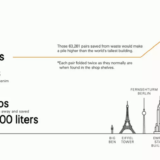A letter to the truth fairy

A lot of rubbish has been spouted in recent weeks about so-called PR spam, ie the business of PR agencies and their ilk emailing press releases to journalists, en masse.
Most recently, a site calling itself An Inconvenient PR Truth has hopped on this rickety old bandwagon.
I can be quite an opinionated and confrontational chap at times so I thought I’d wade in with a few convenient ripostes.
Context – I’ve been in the PR industry for about 12 years. Before that I was a journalist blah, blah, blah.
I’ve done the my-inbox-is-under-siege-from-hundreds-of-press-releases-per-day thing. I’m also old enough to have had hundreds of press releases delivered every day in the mail (you know, snail mail) every day – in sacks. Actual sacks. On one occasion a room full of sacks of letters from readers. OK, they’re not press releases but they were equally unsolicited.
I didn’t view it as spam or anything approximating it. Was I missing something? It all came with the territory. If you’ve worked in a busy newsroom you ought to know that.
I have a real problem with the “Bill of Rights” on An Inconvenient PR Truth. I’ll pick out a few things I particularly dislike about it.
Right 1 – Permission required
Press releases should only be sent to Recipients who have given express or implied permission. Implied permission meaning the recipient has stated publicly that they are happy to receive press releases.
The very act of becoming a journalist carries an implication that you are aware of the existence of things like PR companies and press releases. So there’s your basic principle of implied permission. Everything after that is merely degrees of irritation.
Right 4 – Read publication first
Before any correspondence is entered into, the PR person will have first researched the Recipient’s subject focus and read the publication or articles they write or publish to ensure that the content is relevant.
Hard to argue against. But good luck with enforcing that one.
Right 6 – Types of release
A Recipient has the right to receive press releases about ‘types’ of stories that they are likely to be interested in and not announcements of any kind just because of an industry categorisation.
I foresee an increase in the sale of crystal balls.
Right 7 – Telephone calling
After receiving a press release the Recipient should not expect a follow up call from the sender. Acts of such kind only waste time and have no bearing on whether a press release is used for a news story.
The first sentence implies that journalists read every email they receive. Which is not only a whopping great lie but it seems to undermine the whole “PR spam” point of view. As in… if it’s spam why are you reading it?
That second sentence is also just plain wrong. I can think of too many examples to list here of journalists who, after being called, were able to put previously emailed press releases to good use. As news stories. And then called / emailed asking for follow up info for subsequent stories.
Right 8 – Succinct headlines
A Recipient has the right to receive press releases with succinctly written headlines so a decision of interest can be made quickly.
Define succinct. Something tells me this here Bill of Rights wasn’t put together by someone with a keen legal mind.
This whole PR vs journo thing is a jaded, even out-dated, take on things. It would carry more weight, however, if there wasn’t such an appetite among journalists for press releases and other PR-generated content with which to fill space. As a colleague pointed out earlier today, there are plenty of publications that don’t feed themselves.
Standards could certainly be higher on both sides of the fence. But surely that’s true of most trades and professions.
Maybe the PR industry should up the quality threshold when dealing with journos.
Don’t know how to ask a probing question? Can’t structure an interview? Get facts wrong even after you’ve been spoon-fed them? No idea how to use commas? Do you think second-sourcing might mean putting more ketchup on your chips? Have you ever agreed to come to a briefing and then didn’t show up without letting someone know you’ve changed your mind? Then you’re off the list – no interviews, briefings, press releases, photography, lunches, trips, etc etc.
How does that sound?
I agree there’s plenty of room for improving some of the practices that go on around press releases and how they are issued and followed up. But it would require a lot of cooperation from the PR industry, media list/distribution companies and journalists.
I shan’t be holding my breath.








Enjoyed reading this analysis of that Bill of Rights – it's a nice idea but you highlight the impracticality pretty well.
Proposed a whole different solution to the problem here http://j.mp/prspam, puts the impetus more on the journalist because Bad PRs will never go away. Be interested in your thoughts.
Good post – although I am all for the Bill of Rights – even if it only acts to as a way to draw highlight areas that need to be worked on by all in the PR industry.
One comment which I thought was a bit unrealistic:
“Maybe the PR industry should up the quality threshold when dealing with journos.”
Wow. Some of the bad qualities you listed I have experienced with some of the most high profile journalists in the country. I would like to see any PRO decide to knock them of their press list and then explain to the client why they are not approaching these guys anymore. I'm sorry but we don't really have a choice here.
If a client's target publication is Piss Poor PR World and the editor decides not to 'ask probing questions' during an interview, I kind of doubt you can afford the luxury to place him on your ever growing hack scrapheap.
You either have to ensure that all of your clients are some form of public interest deity or grin and bear it.
Hi Sean
Thanks for getting involved in the debate and for taking the time to give your commentary on the campaign and the bill of rights.
Firstly on the language, irony etc point this is obviously (as you have realised) to get the debate started, but it the substance of the issue, or lack of as you suggest (?), that we want to debate.
Your critique is exactly what we are seeking. The 10 rights were purely for discussion as it says and we definitely didn't expect them to be agreed to 100 per cent by everybody or even anybody! But they are based on things that the journalist/blogger community have said – hence we have linked to examples. The end game here could be we thrash things out all of us – PRs, service providers, clients, journos, bloggers – and conclude that all or some of this isn't needed. But at least we would then have an agreed basis to work on.
On your specific points: Point 1 the rights are meant to cover all recipients of press releases not just journalists e.g. bloggers, where such implied permission does not (arguably) exist.
Point 6 not convinced crystal balls are necessarily needed, though a (unrealistic?) degree of effort maybe. If I have read your articles and seen that you never cover a new appointment or office opening is it a big stretch to conclude that you won't be interested in releases about such topics? (as the research suggests)
Point 7 The campaign was also about wasting time, but perhaps this one is the least relevant in the list? 🙂
Point 8 fair play on “define succinct” but if you agree with the point in general terms perhaps you could suggest a better form of words?
Finally agree that change would require a lot of cooperation and investment and maybe we are on a hiding to nothing, but is that a reason not to try?
Thanks again for taking so much time to comment and very happy to talk more if you would like.
Best
Adam
You speak much sense Sean, and I think your views are probably held by the majority. This is why previously I have never entered this debate.
However, what I thought was most interesting abouy Adam's campaign was the research that revealed that PRs don't actually have to be much more precise to achieved greater satisfaction among journalists. That made me think the debate was worth having.
The thing about the followup call is that it can sound so much like a moan or a nag. I always advise people to have something to say – 'about that press release, we now have a customer/more stats/review kit'…
Then the journalist's objection to a simple follow-up is effectively neutralised.